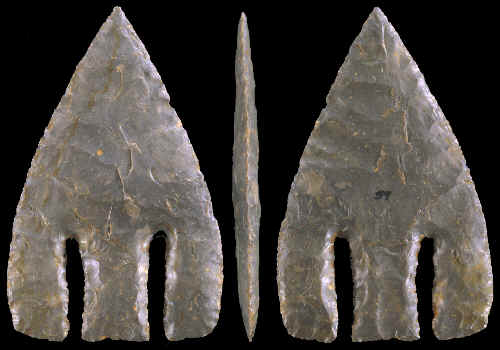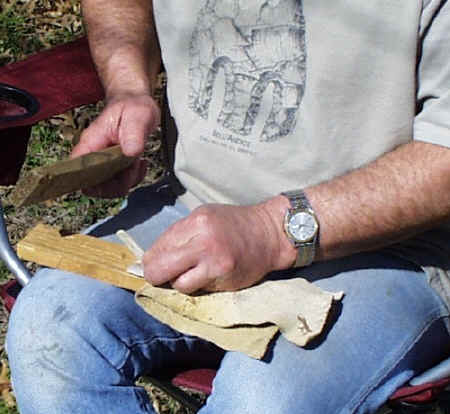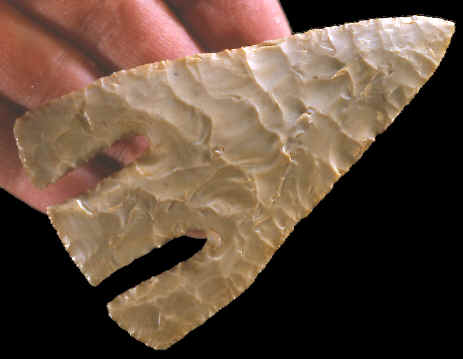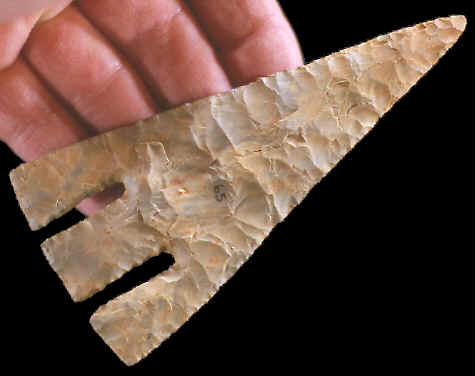|
|
|
By the sixth grade Carey was making his first arrowheads using church keys, files, and screw drivers on prehistoric flakes that he picked up on ranches in the area. By the eighth grade he had a fairly sizable collection with 18 really outstanding artifacts. Well, he took them to school on Earth Science Day----and never saw them again! By this time he was experimenting with pressure flaking and percussion flaking but had gone about as far as he could with it. |
|
|
|
|
Carey attended Texas A&M and majored in Recreation, Park and Tourism. He also took nine hours of Anthropology. After he graduated he began his career with the U.S. Army Corps of Engineers. In 1977 archeologist Larry Banks suggested that he go see J.B. Sollberger who's famous for fluting with a lever pressure technique. Mr. Sollberger (Solly) became his tutor, mentor and very good friend until his death only a few years ago. Carey says that Solly "taught me how to approach flintknapping knowledgeably, with emphasis on documentation, structured experiments, replication and publication." |
|
|
Carey says that "by the time he died, Solly had imparted in me much of his knowledge and understanding of fracture in silica materials, including how to interpret flake scars and his definition of a true replica-replication technique-----(1.) the number of replications is statistically significant,( 2.) the distribution of quantitative (measurable) attributes (characteristics) matches, and (4.) a tool kit available to the prehistoric craftsmen was used (during the replication experiment)." |
|
|
|
|
By attending the Texas Knap-Ins that J.B. Sollberger helped to organize Carey met two knappers, William B. Carroll and Leland W. Patterson. He says "Bill had a very detailed knowledge of artifact variation and raw material distribution in Texas, as well as different flaking techniques. Lee was a disciplined observer and writer of numerous works." Through these three friends Carey says that "I found my future in flintknapping and replication of prehistoric Texas artifacts. All of them encouraged me to believe in what I could do and to publish my observations." |
|
| CONTINUE ON TO PAGE Three | |
|
"REFERENCES"
1985,
"Selected Preforms, Points, and Knives of the North American Indians,
Vol. I," Calf Creek, by Greg Perino, p.62. |
|



